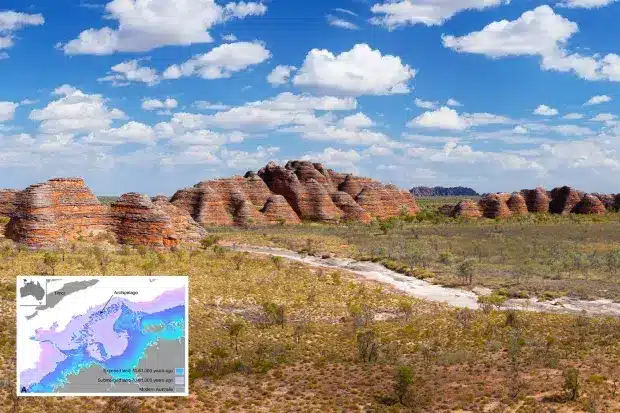About Sahul:
- It can be termed as a supercontinent which stood exposed on the Earth’s surface when humans were in the middle of what can be termed as the last ice age.
- Since the ice age led to glaciation of water levels on the planet, it ended up exposing parts of land like Sahul which connected to currently known Australia to Papua New Guinea in the north and Tasmania in the south,
- It helped humans in ancient times to cross continents from Asia to Australia almost 7,000 decades ago.
What is the Ice age period?
- It is any geologic period during which thick ice sheets cover vast areas of land. Such periods of large-scale glaciation may last several million years and drastically reshape surface features of entire continents.
- The earliest known took place during Precambrian time dating back more than 570 million years.
- The most recent periods of widespread glaciation occurred during the Pleistocene Epoch (2.6 million to 11,700 years ago).
- Ice ages are not uniformly cold. There can be colder and warmer periods during the overall ice-age period.
Colder periods lead to more extensive areas of continental ice sheets, valley glaciers and sea ice, while warmer periods lead to reduced areas of ice.
Q1: What is the Little Ice Age (LIA)?
It was one of the coldest periods of the past 10,000 years, a period of cooling that was particularly pronounced in the North Atlantic region. It is best known for its effects in Europe and the North Atlantic region.
Last updated on June, 2025
→ UPSC Notification 2025 was released on 22nd January 2025.
→ UPSC Prelims Result 2025 is out now for the CSE held on 25 May 2025.
→ UPSC Prelims Question Paper 2025 and Unofficial Prelims Answer Key 2025 are available now.
→ UPSC Calendar 2026 is released on 15th May, 2025.
→ The UPSC Vacancy 2025 were released 1129, out of which 979 were for UPSC CSE and remaining 150 are for UPSC IFoS.
→ UPSC Mains 2025 will be conducted on 22nd August 2025.
→ UPSC Prelims 2026 will be conducted on 24th May, 2026 & UPSC Mains 2026 will be conducted on 21st August 2026.
→ The UPSC Selection Process is of 3 stages-Prelims, Mains and Interview.
→ UPSC Result 2024 is released with latest UPSC Marksheet 2024. Check Now!
→ UPSC Toppers List 2024 is released now. Shakti Dubey is UPSC AIR 1 2024 Topper.
→ Also check Best IAS Coaching in Delhi
























